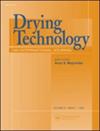Investigation of natural dewatering of dredged sediments incorporating evaporation and drainage
IF 2.7
3区 工程技术
Q3 ENGINEERING, CHEMICAL
引用次数: 0
Abstract
Abstract Whether driven by the need to dispose of contaminated sediment, a reduction in the size of confined disposal areas, or a lack of land adjacent to dredge sites, dewatering practices have gained prominence over the past few years. It is necessary to dewater these dredged sediments so that they can be used for beneficial purposes, such as industrial or construction backfill material. This study explores the natural dewatering method that reduces the water content of dredged sediment through evaporation and drainage. This research implemented two types of dredged sediments from different origins to determine the effects of sediment type on both evaporations as well as dredging. First, the effects of diameter on the rate of evaporation (ROE) and the potential of evaporation (POE) were investigated. The measured POE was then compared to the predicted POE using Rohwer’s and Penman’s models. In order to improve the handling of these dredged sediments prior to beginning the valorization process, a correlation between the decrease in water content and the increase in shear strength is discussed. This research will improve the handling of these sediments for transportation and indirect management of dredged sediment valorization.结合蒸发和排水的疏浚沉积物自然脱水研究
本文章由计算机程序翻译,如有差异,请以英文原文为准。
求助全文
约1分钟内获得全文
求助全文
来源期刊

Drying Technology
工程技术-工程:化工
CiteScore
7.40
自引率
15.20%
发文量
133
审稿时长
2 months
期刊介绍:
Drying Technology explores the science and technology, and the engineering aspects of drying, dewatering, and related topics.
Articles in this multi-disciplinary journal cover the following themes:
-Fundamental and applied aspects of dryers in diverse industrial sectors-
Mathematical modeling of drying and dryers-
Computer modeling of transport processes in multi-phase systems-
Material science aspects of drying-
Transport phenomena in porous media-
Design, scale-up, control and off-design analysis of dryers-
Energy, environmental, safety and techno-economic aspects-
Quality parameters in drying operations-
Pre- and post-drying operations-
Novel drying technologies.
This peer-reviewed journal provides an archival reference for scientists, engineers, and technologists in all industrial sectors and academia concerned with any aspect of thermal or nonthermal dehydration and allied operations.
 求助内容:
求助内容: 应助结果提醒方式:
应助结果提醒方式:


